The Texas Trinity combo plate—beef, ribs, and sausage—is probably the most commonly served dish at Texas barbecue joints, and usually, the beef brisket gets all the glory. But we should shine a little more light on pork ribs, which are often a joint’s better tasting meat (it’s difficult to perfectly execute a beef brisket while pork ribs are more forgiving in the smoker).
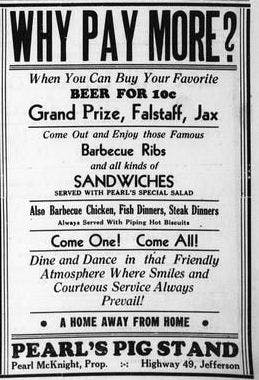
The strong association people have of Texas barbecue and beef is undeniable, but I’ve found ads early in the twentieth century for meat markets selling barbecued pork at pig stands. This ad in the Marion County Courier (serving Jefferson, TX) in April 21, 1939, implores readers to try their already “famous” barbecue ribs.
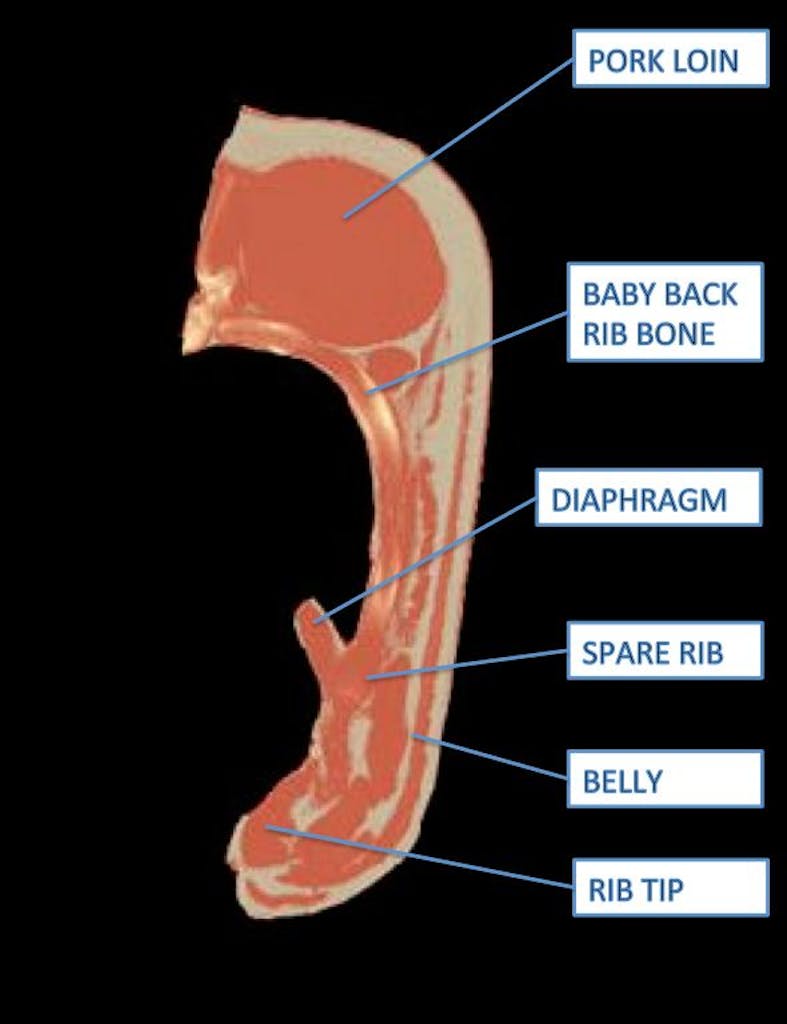
What variety they were serving—baby backs, spare ribs, country-style or St. Louis—is hard to know. But what you get these days when you order pork ribs really varies considerably, especially by region. Out in Memphis, you can expect to find baby back ribs. These are not ribs from baby pigs (you say, “duh,” I say, “you’d be surprised”). They’re cut from the upper portion of the full rib bone closer to the spine and are known in the meat industry by their more technical name, “back ribs.” The North American Meat Processors Association (NAMP) has specific definitions for these cuts, and pork backs ribs are cut #422. In the past, if a rack is smaller than a pound and a half or so, they would call them “baby” back ribs. Nowadays the size doesn’t really matter. If they come from the upper portion of the ribs attached to the pork loin, they are called baby back ribs.
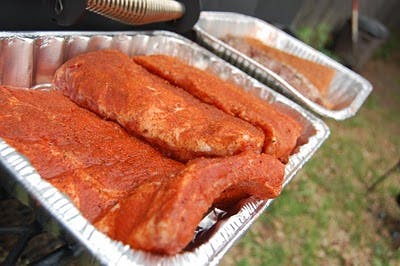
Here in Texas, you generally get pork spare ribs, but I’ve found more baby back ribs popping up on barbecue joint menus in Texas. Baby back racks are generally meatier than their spare rib counterparts, which makes them easier to keep moist in the long, slow smoking process. There’s also a smaller chance you’ll purchase shiners, or ribs where the meat that should be covering the bone is cut too close, leaving the bone exposed. This happens in the processing facility when the adjacent cut of meat is being removed from the ribs. In spare ribs the adjacent cut is pork belly. Backs ribs are attached to the pork loin, and it serves retailers well to sell meatier back ribs. In comparing prices this week, back ribs were $5.99 per pound (on sale) at a high-end retailer while boneless pork loin was fetching just $5.49 per pound (regular price). At a large supermarket the same was true. Pork loin was $3.4 per pound and back ribs were $3.99 per pound. It’s more profitable to leave more meat on the ribs than the loin when they two cuts are separated. From a consumer standpoint, the cost is even higher. If you estimate the weight of the bones to be about forty percent of the rack, the cost of the meat in those supermarket ribs is really $6.65 per pound. If you have some knife skills, you’re actually better off purchasing a full bone-in loin and separating the two cuts yourself. The bone-in loin is cheaper than either of its derivatives.
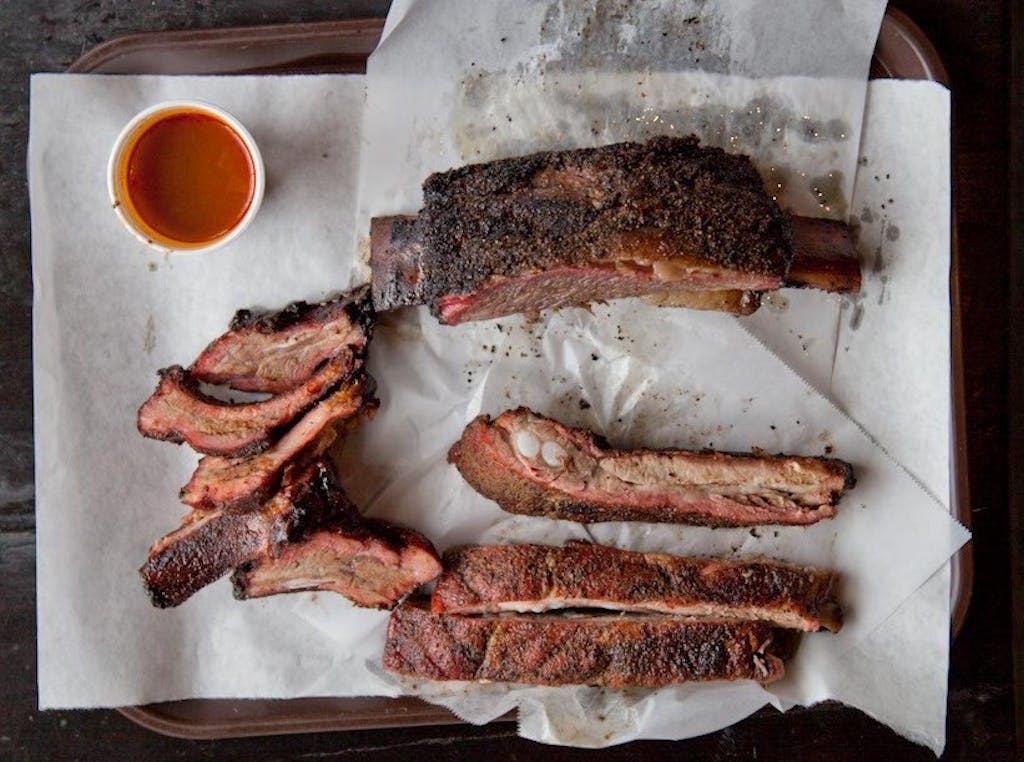
Baby backs are also becoming more popular. Places like Rudy’s have provided the option of St. Louis-cut ribs or baby backs for many years, but I just visited two new barbecue joints in North Texas last week that only offered baby backs. They are also more familiar to barbecue newbies. Wayne Mueller added a sweet glazed baby back to the menu at Louie Mueller Barbecue a couple years back because tourists weren’t sure what to do with the giant spare ribs. They were more comfortable eating the more familiar sweet baby backs. (Personally, I think those poor souls are missing out on some great spare ribs.) Barbecue joints can also make baby backs more profitable by selling them in larger quantities. At Opie’s Barbecue in Spicewood you can order spare ribs by the individual bone, but if you want their signature sweet-and-spicy baby backs, you’re forced to order a half or full rack from the pit.
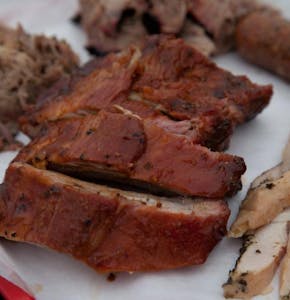
Another option that can be specified from the processing plant is the removal of the membrane on the back of the rib rack. This membrane is called the peritoneum (or pleura) and can be peeled off. There are many arguments for and against removing the membrane, but Nick Pencis from Stanley’s Famous Barbecue sums it up best when he explains that he would remove them when they were selling about six racks of ribs a day. Now that they go through a hundred racks on a busy Saturday, he doesn’t bother anymore.
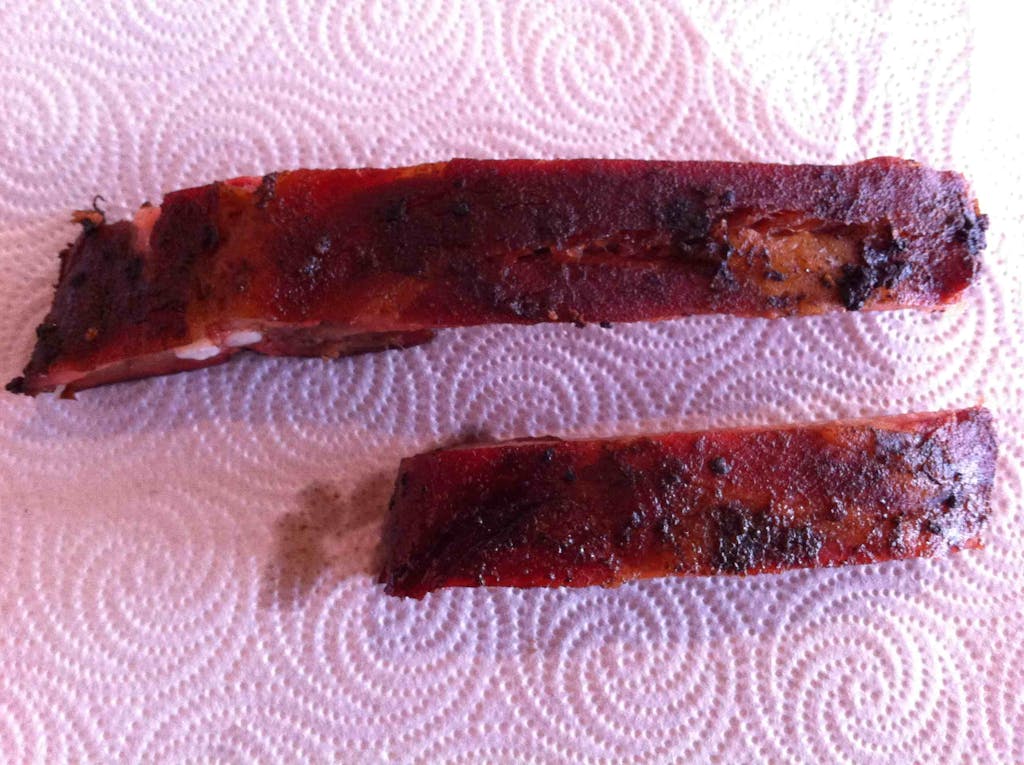
The popularity of baby backs may be growing in Texas, but you’re still much more likely to find spare ribs in the Lone Star State. These are cut from the longer straight portion of the rib cage below the baby backs. The NAMP number is 416 for the full rack, but there are many variations. Very few barbecue joints leave the full rack intact for smoking. That’s because technically a full rack of spare ribs includes the portion of the sternum where the rib cage meets on the underside of the hog. This portion is cut off and either thrown away or smoked separately and sold as “regulars.” The term should really be irregulars, but this is what you’re getting if you order regulars in joints especially around the Houston area. Adrian Handsborough of Virgie’s says he smokes them so he has something to give away or sell cheap to those in need.
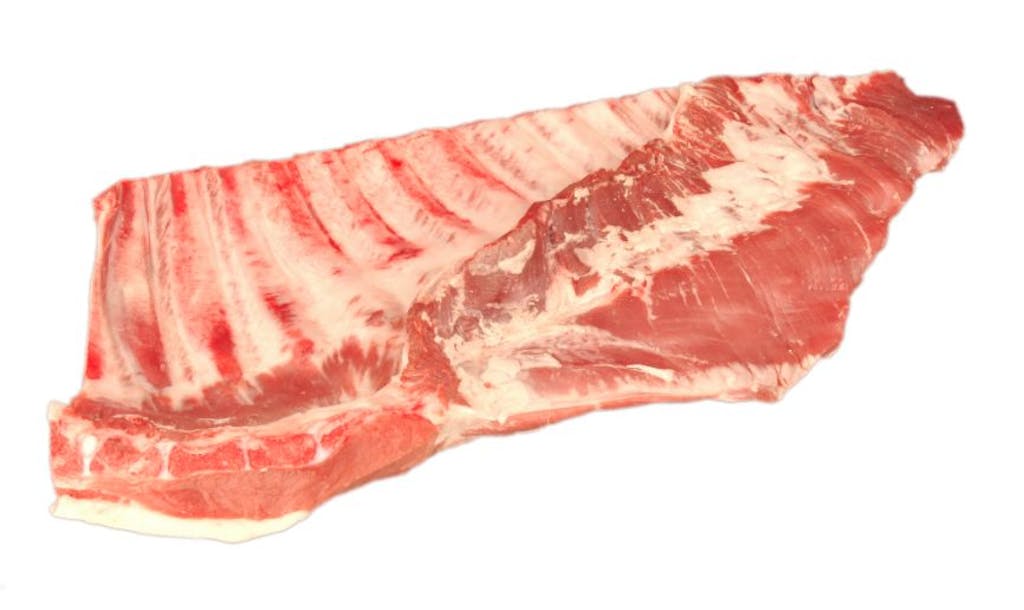
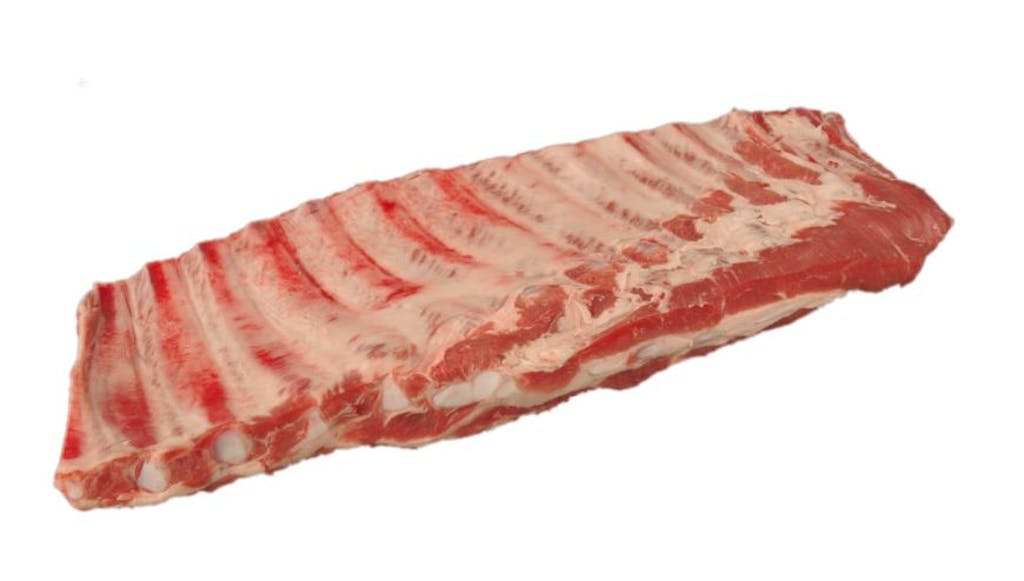
Another common way to trim a rack of spare ribs is to remove the curved bottom edge of the rack. This squares up the rack into St. Louis ribs. Bear in mind that when you see St. Louis ribs on a barbecue joint menu, they are not ribs cooked in some style unique to the St. Louis area. It’s just the name of the cut. These ribs resemble baby backs in size, but the bones are flat instead of having the signature baby back curve. The edge that is trimmed away is either discarded or smoked separately, an item called rib ends or tips. Rib tips are a very popular items in Chicago, but aren’t typically found in Texas, though Fargo’s in Bryan serves them twice a week as a special.
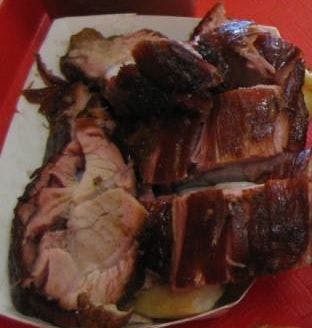
More often you’ll see the rib ends attached to the rack, so restaurants can serve full spare ribs. For me there is no better bite on a spare rib than the small flat portion of meat that comes off the top of the rib end on a full spare rib. It’s also a great check for doneness since it should pull away form the mass of fat and tendon below pretty easily.
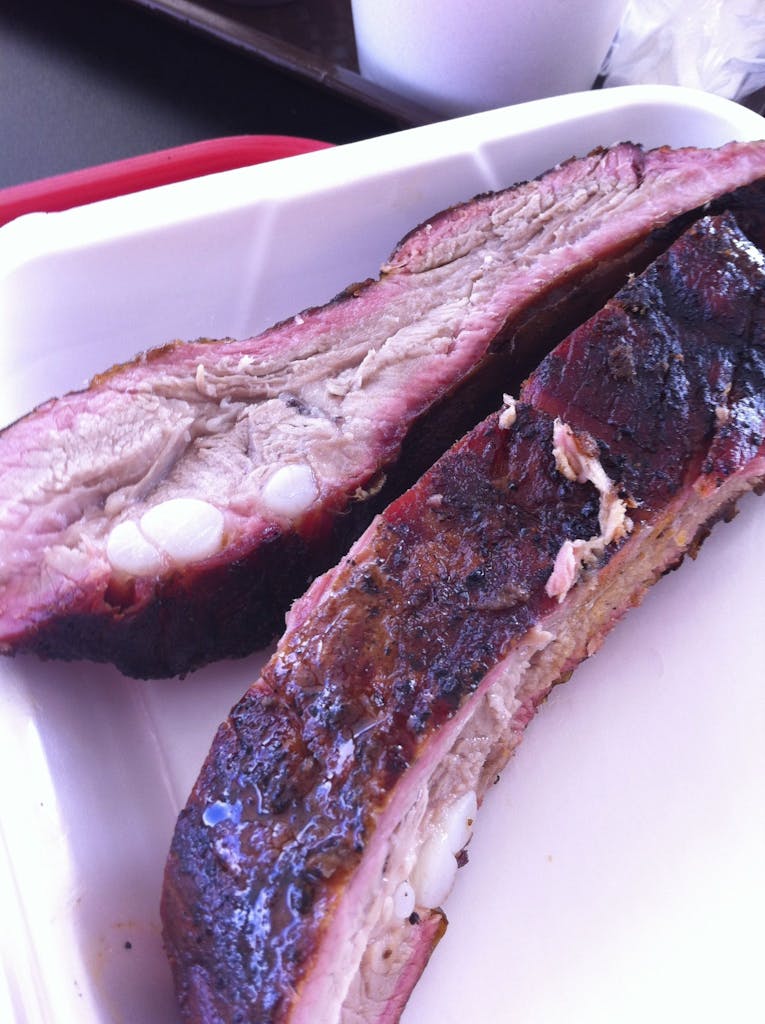
Spare rib racks also come in different sizes. The most common and manageable is the three-and-a-half-and-down rack. That means the whole rack will weigh three-and-a-half pounds or less. At joints like Fargo’s in Bryan and Virgie’s in Houston they order huge racks and serve very large ribs as a result, but you’re more likely to find ribs the size of those at Franklin Barbecue or Micklethwait Craft Meats in Austin as pictured below.
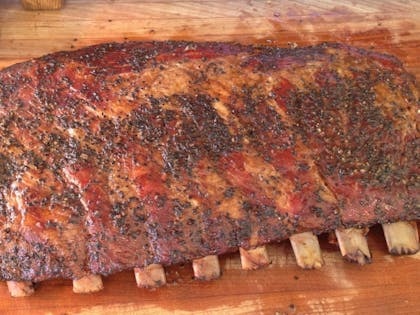
There are a couple of other rib options on a hog, but you won’t find them often at Texas barbecue joints. NAMP #423 is a country style rib. According to the technical definition, these come off the front end of the rib rack (toward the shoulder) with the loin still attached. I’ve only found these at the stupendously named Wild Horse Mountain Barbecue in Salisaw, Oklahoma. They were’t butterflied there like they normally are for retail sale. Retailers and barbecue joints alike are liberal with the name country style ribs, so it’s also common to find strips of shoulder meat being sold under that name. That will be covered in a forthcoming segment about pork shoulder cuts.
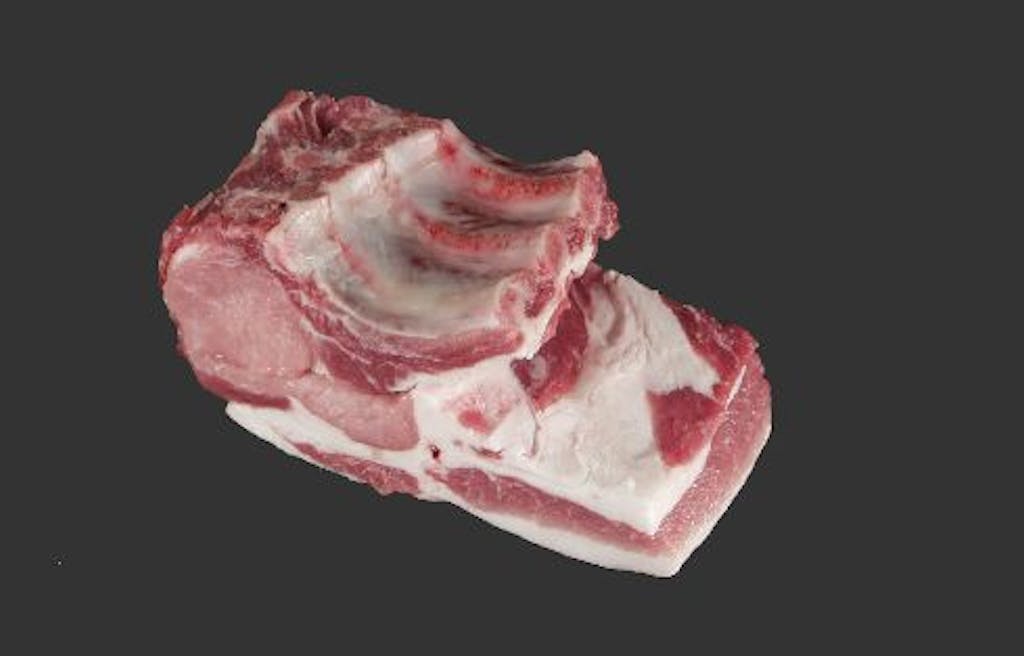
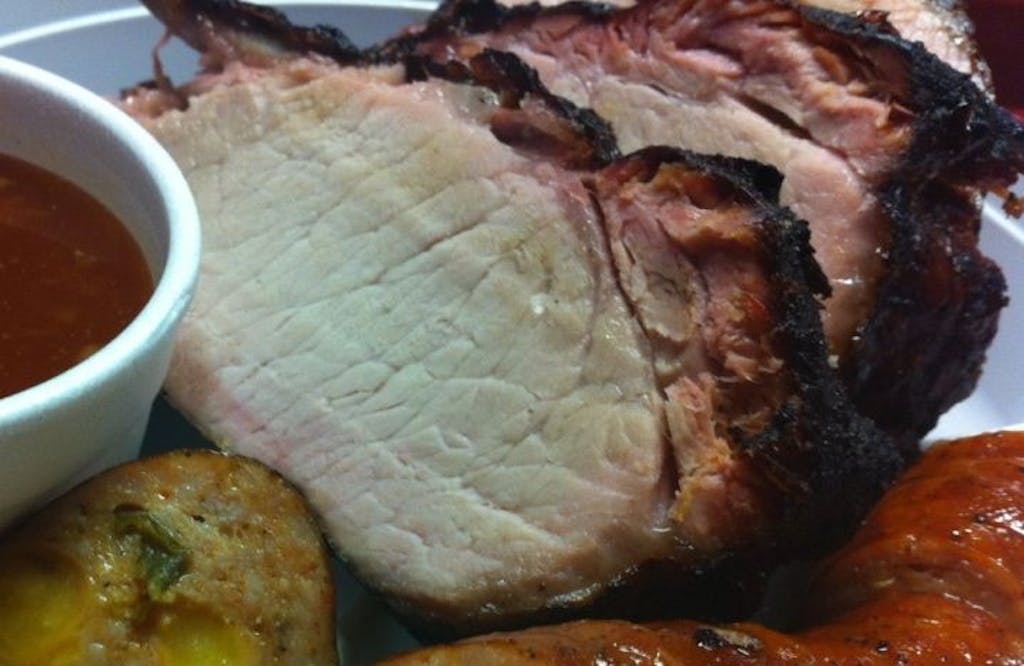
Riblets are NAMP #424. You’re probably know this cut if you’ve been to Applebee’s. Before I moved to Texas this was sadly the cut I was most familiar with along with Chili’s baby back ribs. Riblets are cut either from the last couple bones at the back end of a spare rib rack, or they come from the long finger bones coming out from the spine just beyond the last of the rib bones. If you try them you’ll likely thank God for spare ribs.
– Much of the information and a few of the photos in this column came from the free and immensely useful Porcine Myology page from the University of Nebraska Lincoln.
- More About:
- Franklin Barbecue
- Black BBQ








